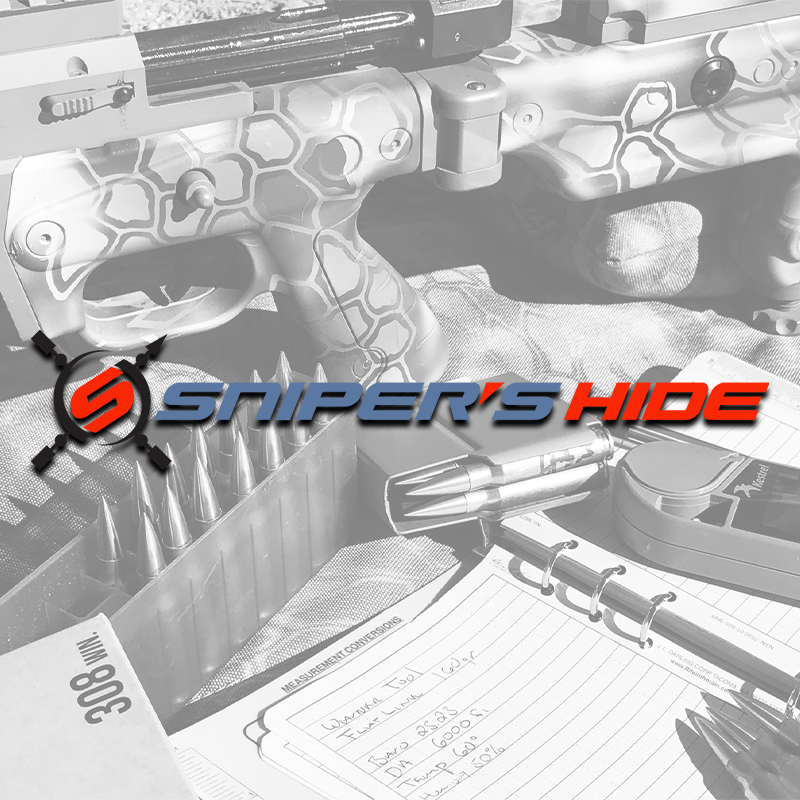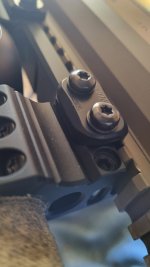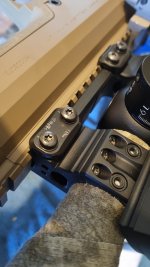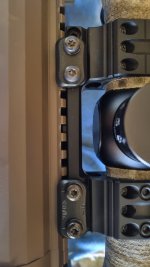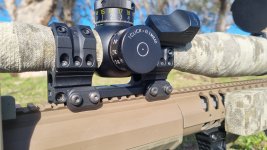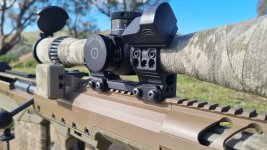As I mentioned on page 1, I had 5 out of 11 Spuhr clamp bars fail over about 12 years of use-- that’s a 45% failure rate just in my own safe. Granted, they were all the thinner Gen 1 design which were more prone to failure than the thicker screw pad Gen 2 design, but a 45% failure rate is a giant red flag for a design or material issue (or a combination of both.) Plenty of pics here on SH of the thicker Gen 2 clamp bars cracking as well, and now Gen 3 are made from steel.
Regarding installation methods since that always gets mentioned by the Spuhr cheerleaders to try to deflect blame to the end user, especially when someone like me experiences a 45% failure rate… keep in mind installing a scope mount is not a complex assembly procedure and the two biggest points of deviation for the end user to really mess things up are using dry torque specs on fasteners that the end user added lubrication to, or using a torque driver that’s way out of calibration that overtorques the fasteners.
In my situation I used the same torque driver on every Spuhr I owned to torque all of them to Spuhr’s spec, and the screws were always degreased and dry with no added lubricant or thread locker added, so it’s not like I slathered them in anti-seize and put excess load on the clamp bars and screws because of using the dry spec torque spec on screws that are now lubricated with a wildly different K factor.
Regarding my torque drivers, my 2x Mountz drivers only get used for scope and action screws (so low volume / low cycle use, nowhere near enough use to wear the tools out rapidly) get checked 2 to 3 times a year in the NIST-traceable calibration lab at my work, and I have full paper trail history on them back to the initial as-received condition showing them always in spec every time they get checked. I can also pull the full paper trail and calibration history for the actual torque testing machines from our calibration database to show the torque tester is in spec. I purposely keep these 2 drivers on the low side of spec and favor setting them to -5% to no more than +3% of the indicated setting over the full span during calibration so they don’t overtorque small fasteners.
When clamp bar #4 cracked and I replaced it, I purposely undertorqued the replacement clamp bar to 35 in-lb as a test hoping it wouldn’t crack again. About 2 years later, the replacement cracked while sitting in the safe at the lower torque value, just like all the others failed. They went into the safe intact, they came out at a later date with 1 or 2 ends cracked. When clamp bar #5 failed at a lower torque than Spuhr’s spec that’s when I got rid of all of the Spuhrs and changed brands-- I decided I couldn’t rely on them anymore.
Another data point—I’ve used the exact same Mountz torque drivers that I used to install my 11 Spuhrs to install Badger, ARC, Geissele, Seekins, Nightforce, Burris, and Hawkins rings and mounts… and have experienced *zero* mount failures with any of those other brands using the same tools and installation methods. Screws are always installed with no lubrication or just a bit of threadlocker, with the exception of ARC who specifically states their torque specs are for lubricated fasteners (lube will change the K factor and result in higher stress/stretch in the bolt compared to dry non-lubricated threads / underhead at the same torque value, but ARC designed and spec’d for lubricated fasteners.)
Frank has commented in other threads (that were screenshotted above) that he keeps an inventory of Spuhr clamp bars on hand for his classes because he’s seen so many of them broken, and also says several LE departments will not use them because of the issue. Running his classes probably exposes him to a larger sample size than your average user, and he seems to only keep spare parts on hand for one specific brand… but make your own decisions.
Seems the latest Gen 3 Spuhrs are now using steel clamp bars, and my hunch is that will finally solve their clamp bar failure issue—but I won’t use any more of them. Having wandering zero / impact issues at the range sucks… the first time it happened I spent a while trying to figure out the problem at the range but only noticed the cracked clamp bar once I got home. After that first you learn to look over the mounts closely before heading to the range and wasting ammo.
Before the Gen 3 steel clamp bars were a thing I always wondered if the $30-100 Spuhr fakes on AliExpress had stronger clamp bars than the genuine ones, lol. (FYI, they also sell fake Scalarworks, Badger, Geissele, etc... they can look pretty convincing at a quick glance!)

